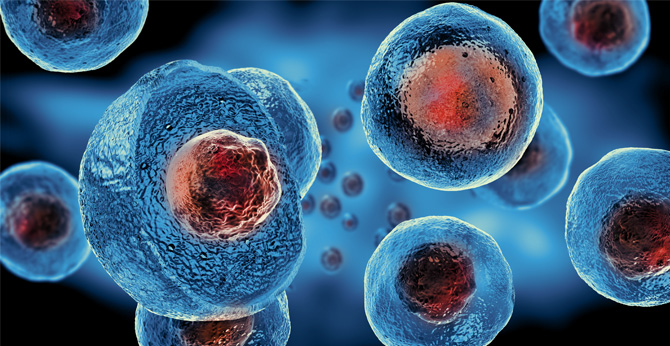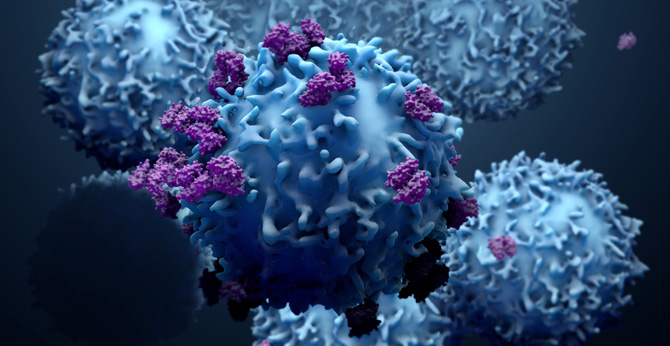All products and services are For Research Use Only and CANNOT be used in the treatment or diagnosis of disease.
The vector of anti-HIV-1 chimeric antigen receptor (CAR) is constructed for the engineering of T cells to target HIV-1. The T cells are genetically modified through transduction with a lentiviral vector expressing scFv of anti-HIV-1 antibody linked to 41BB and CD3ζ signaling domains. And the vector product was designed for the treatment of HIV-1 infection.
|
CAR Construction : 3BNC117-41BB-CD3ζ
Fig.1 CAR-T cells displayed preferable immunophenotype. The subset composition of UTD/3B/3BD CAR-T cells were measured by surface expression of CD45RA and CD62L. Jiang, Z., Liang, H., Pan, H., Liang, Y., Wang, H., Yang, X., ... & Zhu, H. (2021). HIV-1-specific CAR-T cells with cell-intrinsic PD-1 checkpoint blockade enhance anti-HIV efficacy in vivo. Frontiers in Microbiology, 12. |
|
CAR Construction : 3BNC117-41BB-CD3ζ
Fig.2 CAR-T cells displayed preferable proliferation. CAR-T cells sorted for CAR expression were incubated with LHL2/3 cells (5 × 105cells) at 1:1 ratio for 5 days, and CAR+cells were counted daily to evaluate thein vitro proliferation. Jiang, Z., Liang, H., Pan, H., Liang, Y., Wang, H., Yang, X., ... & Zhu, H. (2021). HIV-1-specific CAR-T cells with cell-intrinsic PD-1 checkpoint blockade enhance anti-HIV efficacy in vivo. Frontiers in Microbiology, 12. |
|
CAR Construction : 3BNC117-41BB-CD3ζ
Fig.3 Cell killing assay. Direct killing of LEL6 was performed using the LDH release assay. Jiang, Z., Liang, H., Pan, H., Liang, Y., Wang, H., Yang, X., ... & Zhu, H. (2021). HIV-1-specific CAR-T cells with cell-intrinsic PD-1 checkpoint blockade enhance anti-HIV efficacy in vivo. Frontiers in Microbiology, 12. |
|
CAR Construction : 3BNC117-41BB-CD3ζ
Fig.4 cytotoxicity assay. Direct cytotoxicity effects on Jurkat cells, as the Env negative control here, were detected Jiang, Z., Liang, H., Pan, H., Liang, Y., Wang, H., Yang, X., ... & Zhu, H. (2021). HIV-1-specific CAR-T cells with cell-intrinsic PD-1 checkpoint blockade enhance anti-HIV efficacy in vivo. Frontiers in Microbiology, 12. |
|
CAR Construction : 3BNC117-41BB-CD3ζ
Fig.5 TNF-α, IL-2 and IFN-γ production in co-cultures. Anti-HIV CAR-T cells were co-cultured with LEL6 cells (1 × 10^4cells) at 10:1 for 24 h, and supernatants were collected for ELISA. Jiang, Z., Liang, H., Pan, H., Liang, Y., Wang, H., Yang, X., ... & Zhu, H. (2021). HIV-1-specific CAR-T cells with cell-intrinsic PD-1 checkpoint blockade enhance anti-HIV efficacy in vivo. Frontiers in Microbiology, 12. |
|
CAR Construction : 3BNC117-41BB-CD3ζ
Fig.6 CAR-T cells eliminated LEL6 cells in vivo. CAR-T cells displayed superior anti-HIV function in an HIV NCG mouse model. Jiang, Z., Liang, H., Pan, H., Liang, Y., Wang, H., Yang, X., ... & Zhu, H. (2021). HIV-1-specific CAR-T cells with cell-intrinsic PD-1 checkpoint blockade enhance anti-HIV efficacy in vivo. Frontiers in Microbiology, 12. |
|
CAR Construction :
Fig.7 Surface plasmon resonance analyses. SPR sensorgrams showing the bindingof bNAbs expressed as IgG1 (green), IgA1 (blue), and IgA2 (red) to YU-2 gp140 or gp120 ligands expressed as normalized response units (RU) over time. Lorin, V., Malbec, M., Eden, C., Bruel, T., Porrot, F., Seaman, M. S., ... & Mouquet, H. (2017). Broadly neutralizing antibodies suppress post-transcytosis HIV-1 infectivity. Mucosal Immunology, 10(3), 814-826. |
More Published Data More Published Data
There are currently no customer reviews or questions for Anti-HIV-1 (3BNC117) h(41BB-CD3ζ) CAR, pCDCAR1 (CAR-MZ218). Click the button below to contact us or submit your feedback about this product.
For research use only. Not intended for any clinical use. No products from Creative Biolabs may be resold, modified for resale or used to manufacture commercial products without prior written approval from Creative Biolabs.
For any technical issues or product/service related questions, please leave your information below. Our team will contact you soon.
 NEWSLETTER
NEWSLETTER
The latest newsletter to introduce the latest breaking information, our site updates, field and other scientific news, important events, and insights from industry leaders
LEARN MORE NEWSLETTER NEW SOLUTION
NEW SOLUTION
CellRapeutics™ In Vivo Cell Engineering: One-stop in vivo T/B/NK cell and macrophage engineering services covering vectors construction to function verification.
LEARN MORE SOLUTION NOVEL TECHNOLOGY
NOVEL TECHNOLOGY
Silence™ CAR-T Cell: A novel platform to enhance CAR-T cell immunotherapy by combining RNAi technology to suppress genes that may impede CAR functionality.
LEARN MORE NOVEL TECHNOLOGY NEW SOLUTION
NEW SOLUTION
Canine CAR-T Therapy Development: From early target discovery, CAR design and construction, cell culture, and transfection, to in vitro and in vivo function validation.
LEARN MORE SOLUTION